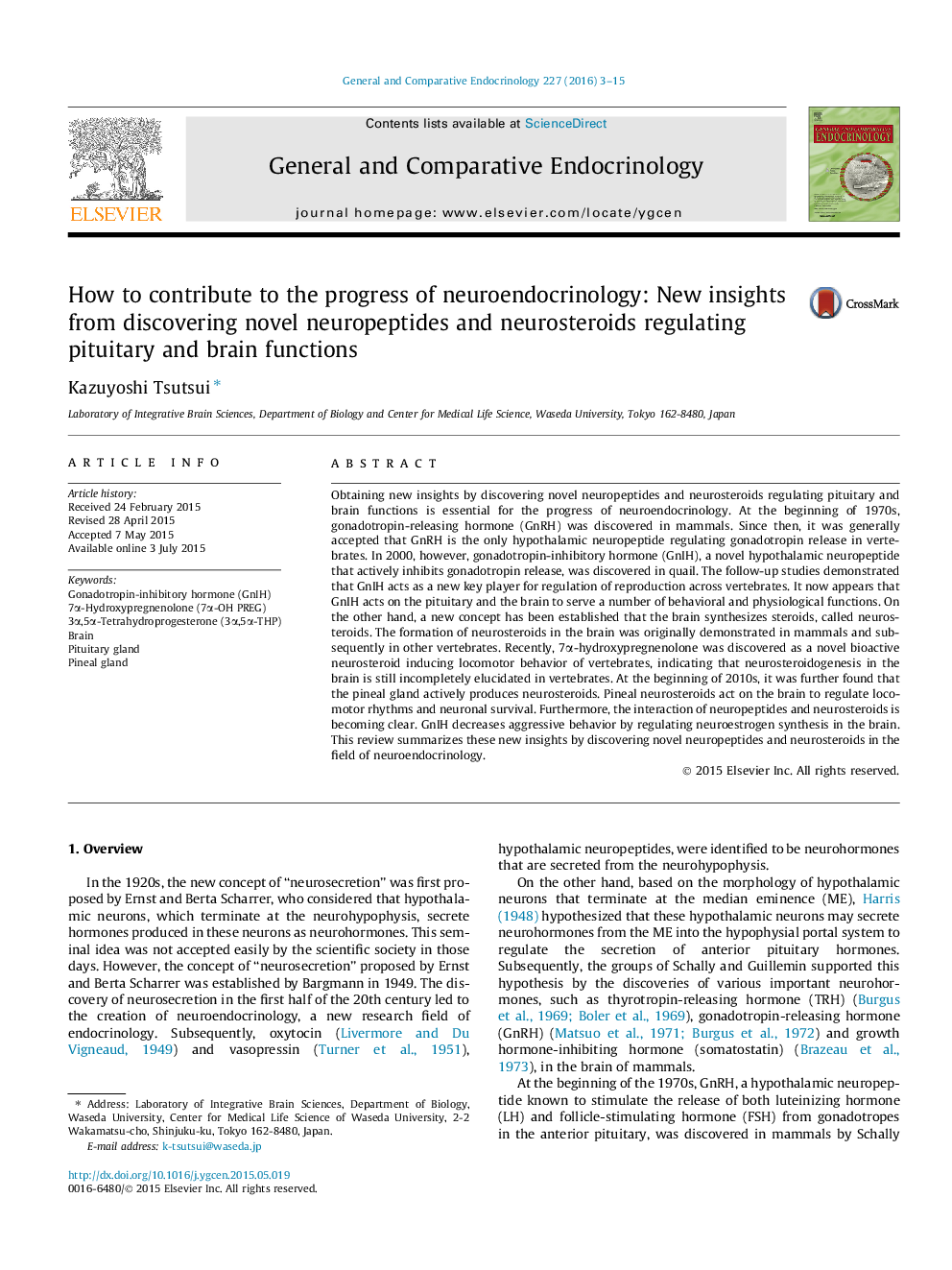| کد مقاله | کد نشریه | سال انتشار | مقاله انگلیسی | نسخه تمام متن |
|---|---|---|---|---|
| 2799853 | 1568879 | 2016 | 13 صفحه PDF | دانلود رایگان |

• GnIH acts as a key player for regulation of reproduction and behavior.
• GnIH modifies neurosteroid milieu for regulation of reproductive behavior.
• 7α-Hydroxypregnenolone acts as a key player for regulation of locomotor behavior.
• Pineal neurosteroids act as key players for regulation of brain functions.
Obtaining new insights by discovering novel neuropeptides and neurosteroids regulating pituitary and brain functions is essential for the progress of neuroendocrinology. At the beginning of 1970s, gonadotropin-releasing hormone (GnRH) was discovered in mammals. Since then, it was generally accepted that GnRH is the only hypothalamic neuropeptide regulating gonadotropin release in vertebrates. In 2000, however, gonadotropin-inhibitory hormone (GnIH), a novel hypothalamic neuropeptide that actively inhibits gonadotropin release, was discovered in quail. The follow-up studies demonstrated that GnIH acts as a new key player for regulation of reproduction across vertebrates. It now appears that GnIH acts on the pituitary and the brain to serve a number of behavioral and physiological functions. On the other hand, a new concept has been established that the brain synthesizes steroids, called neurosteroids. The formation of neurosteroids in the brain was originally demonstrated in mammals and subsequently in other vertebrates. Recently, 7α-hydroxypregnenolone was discovered as a novel bioactive neurosteroid inducing locomotor behavior of vertebrates, indicating that neurosteroidogenesis in the brain is still incompletely elucidated in vertebrates. At the beginning of 2010s, it was further found that the pineal gland actively produces neurosteroids. Pineal neurosteroids act on the brain to regulate locomotor rhythms and neuronal survival. Furthermore, the interaction of neuropeptides and neurosteroids is becoming clear. GnIH decreases aggressive behavior by regulating neuroestrogen synthesis in the brain. This review summarizes these new insights by discovering novel neuropeptides and neurosteroids in the field of neuroendocrinology.
Journal: General and Comparative Endocrinology - Volume 227, 1 February 2016, Pages 3–15